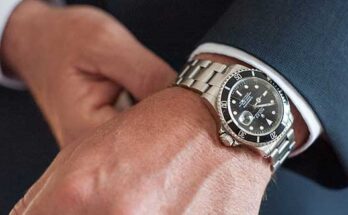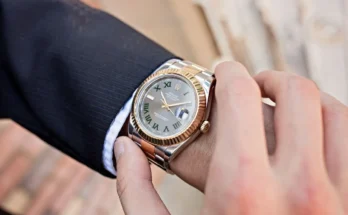The world of fashion is a dazzling spectacle of creativity and glamour, especially seen on the high-profile runways during fashion weeks in cities like Paris, Milan, and New York. However, there’s another side to this glittering coin, often hidden from the public eye – the journey of fashion surplus. This phenomenon, often referred to as ‘Overstock Fashion,’ plays a significant role in the fashion industry’s cycle, impacting both the market and the environment.
The Birth of a Fashion Piece
The journey begins with designers envisioning and manufacturing gorgeous clothes for the runway. The drive to push limits and establish trends drives this creative process. These pieces, displayed at fashion shows, represent the apex of a designer’s artistic vision and skill. They captivate the audience’s attention and establish the standard for style.
The Glamour of the Runway
As models strut down the runway, these fashion items are not just clothes; they are statements. Celebrities, influencers, and fashion enthusiasts watch eagerly, ready to embrace these new trends. The media coverage and buzz around these events are phenomenal, setting the stage for the next big thing in fashion.
From Runway to Retail
Following the shows, designers, and businesses put forth endless effort to transform these runway smashes into more approachable and inexpensive versions for the retail market. This is the point at which runway inspiration meets everyday wearability, resulting in the mass manufacture of apparel. These fashionable products are then stocked in retail establishments and on internet marketplaces, ready for purchase by customers who care about fashion.
The Overstock Dilemma
Despite careful market analysis and trend forecasting, predicting consumer demand remains a challenge. This often leads to overproduction, resulting in surplus fashion items. Overstock fashion is a term that refers to these unsold products, which accumulate in warehouses, taking up space and resources. Brands are then faced with the challenge of dealing with these excess items.
Environmental Impact
Overstock fashion has a substantial negative influence on the environment. The issue of excess inventory compounds the focus already placed on the fashion industry for its role in environmental deterioration. Unsold clothing is a symbol of squandered resources, such as energy, fabric, and water. Furthermore, improper management of excess might lead to its disposal in landfills, worsening the problem of waste and pollution.
Creative Solutions for Overstock Fashion
To address the overstock problem, the fashion industry is looking for innovative solutions. Reducing waste and overproduction is one goal of this strategy, which involves incorporating sustainable practices into the production process. Working together with discount stores and internet portals that specialize in offering overstock clothing at lower costs is another tactic. This makes fashion more approachable for a larger audience in addition to aiding in stock clearance.
Technology and Overstock Management
Technological developments are essential to controlling surplus fashion. AI and data analytics are being used to maximize manufacturing numbers and more accurately forecast consumer trends. Furthermore, overstock-focused digital platforms are starting to appear, giving firms a quick and easy opportunity to get rid of excess inventory.
The Future of Fashion Surplus
One of the industry’s constant challenges is the fashion excess journey. Innovative methods of handling surplus fashion are probably going to become more common as awareness increases and sustainability gains more importance. The goal is to establish a more sustainable fashion cycle, one in which the overstock crisis does not follow the runway’s glitz.
Juggling Glamour and Responsibilities
It becomes clearer when we examine the intricacies of Overstock Fashion that the sector is at a turning point. On the one hand, there is the fashion industry’s indisputable charm and inventiveness, which creates trends and looks that enthrall millions of people. On the other hand, there is an urgent need to address the mounting worries about excess stock and its effects on the environment. This necessitates striking a compromise between upholding fashion’s allure and carrying out one’s duty to adopt ecological methods.
Customer Knowledge and the Need for Eco-Friendly Clothing
The fashion business is evolving due in large part to consumer knowledge. Demand for sustainable practices is rising as more individuals become aware of the ethical and environmental consequences of their fashion decisions. Brands are being forced by this increase in consumer consciousness to reconsider their production tactics and transition to more ethical and ecologically friendly manufacturing techniques.
Fashion Education’s Function
A key factor in determining how the fashion business develops in the future is education. Sustainability is being taught in fashion schools and other institutions more often to teach the future generation of designers and industry professionals about responsible fashion. This education covers the effects of fashion on society and the environment in addition to design and aesthetics.
Partnerships and Cooperations for Sustainability
Fashion businesses partnering with environmental groups and digital enterprises is becoming a major trend. These collaborations seek to address the problem of overstock fashion by investigating cutting-edge fixes including repurposing textiles, creating environmentally friendly materials, and putting in place effective supply chain management methods. These kinds of partnerships represent a group effort to create a more sustainable fashion sector.
The Digital Revolution in Fashion
The way that businesses handle overstock is also being impacted by the fashion industry’s digital shift. To market and sell fashion items, e-commerce platforms and social media channels are becoming more and more crucial. They assist in reaching a wider audience and lessen the possibility of excess stock. Other cutting-edge strategies that are becoming more and more popular include digital apparel and virtual fashion shows, which eliminate the need for actual samples and extra manufacturing.
Regulatory Frameworks and Industry Standards
The role of government and industry bodies is crucial in addressing the issue of overstock fashion. Implementing regulatory frameworks and industry standards can encourage brands to adopt more sustainable practices. Policies around production quotas, waste management, and the use of sustainable materials can significantly impact how the industry deals with surplus stock.
Conclusion: A Sustainable Fashion Future
The fashion industry has a multitude of opportunities and obstacles, as seen by the trip from runway to overstock fashion. This trip serves as a reminder of the need for a sustainable fashion industry where accountability and creativity coexist. This trip may be turned into a positive story by the fashion industry by adopting sustainable methods, utilizing technology, and raising consumer awareness. The story will be that the glitter of the runway leads to a sustainable and fashionable future. Overstock fashion is a developing narrative, and it is up to us all—designers, companies, customers, and legislators—to write the next chapter.




